By J.M. LEE
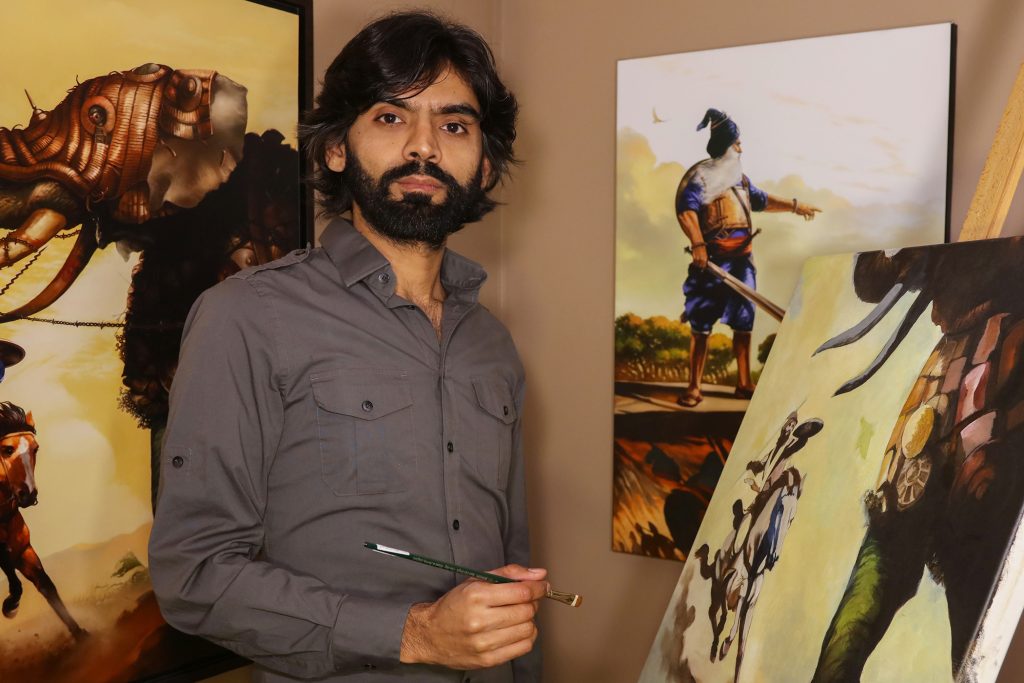
Kanwar Singh Dhillon is globally recognized as a painter of Sikh history. His paintings have been exhibited in prominent galleries worldwide, including the Virasat-e-Khalsa Museum in Punjab, the Arnolfini Art Gallery in Bristol, UK, and a permanent exhibition in Slough, England, which houses over 40 of his works in a 7,000-square-foot gallery space. Kanwar launched his company, Art of Punjab, in 2006 with a resolve to create a comprehensive body of artwork focusing on the history of the Sikhs, starting with the life of Guru Nanak, the founder of the religion.
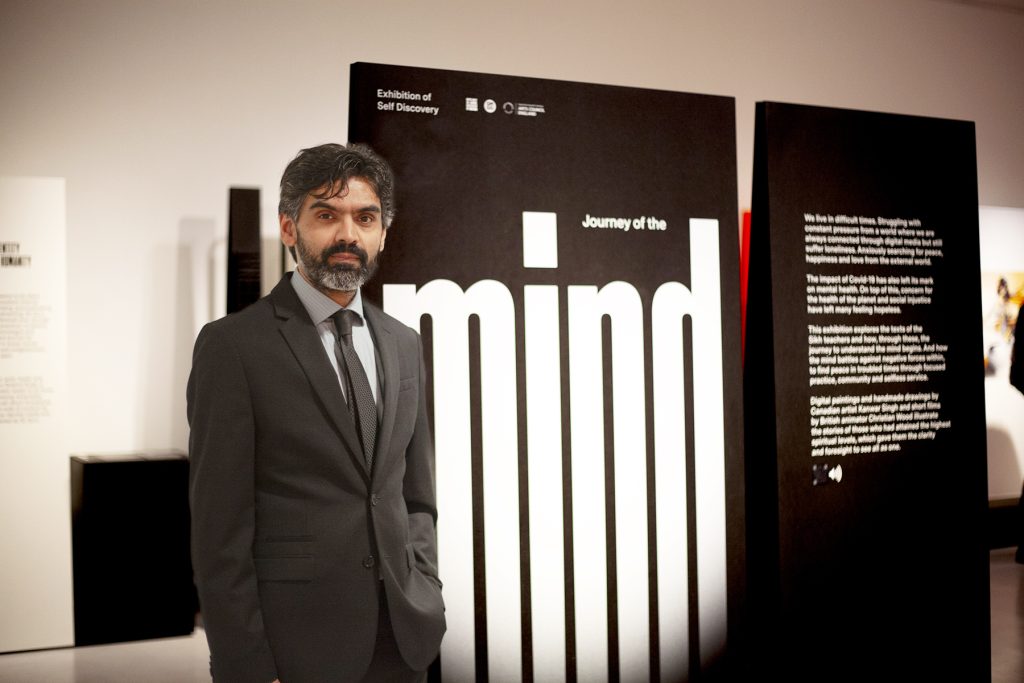
His paintings encompass five hundred years of history, focusing on the lives of the ten Sikh Gurus, the creation of the Khalsa, and Sikhism’s many great heroes, past and present, such as Baba Deep Singh, Mai Bhago, and Jaswant Singh Khalra. He captures quintessential moments that, over centuries, have forged a dynamic Sikh community, from its humble origins in Punjab to its current political and spiritual standing as the world’s fifth-largest religion. The artist continues to build a legacy of work that gives Sikh history a prominent place on the walls of our homes and in the hearts of future generations.
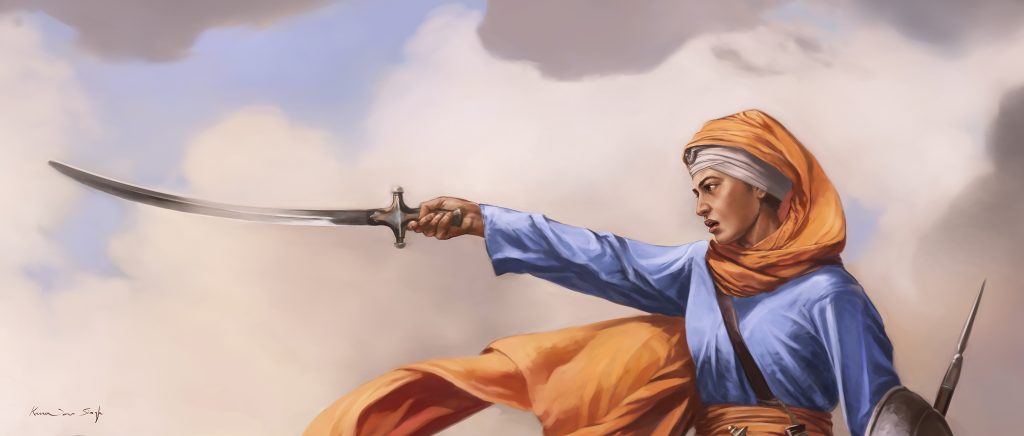
The artist expresses that his primary motive was to create artwork that evokes a stronger sense of cultural and spiritual identity connected to historical roots for anyone who identifies as a Sikh, regardless of where they live. Kanwar Singh shares, “I was born in Punjab, but my family migrated to England when I was seven and then to Canada when I was seventeen. I lost my connection to my origins, and in the West, I always felt like a guest in someone else’s culture and history.”
Although today the artist considers himself a proud Canadian living and working in Toronto, his artistic fascination with Punjab stems from his family’s deep Sikh roots, which trace back to Guru Arjun Dev Ji, the fifth Sikh Guru who completed the construction of the Harimandir Sahib and compiled the first complete Sikh holy text, the Adi Granth.
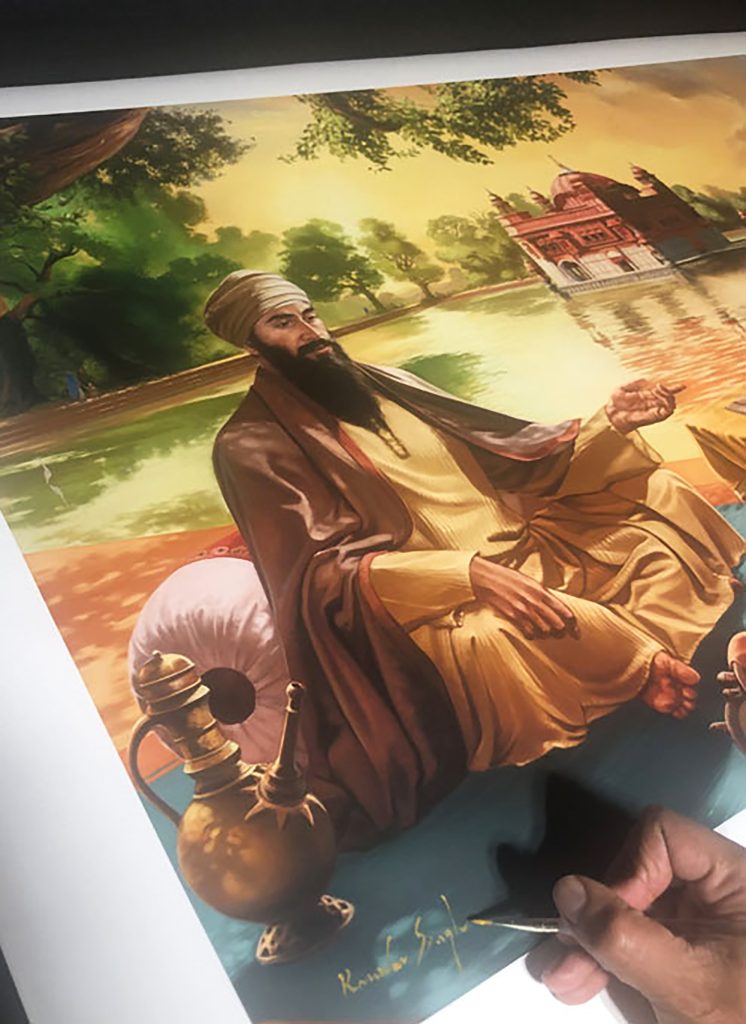
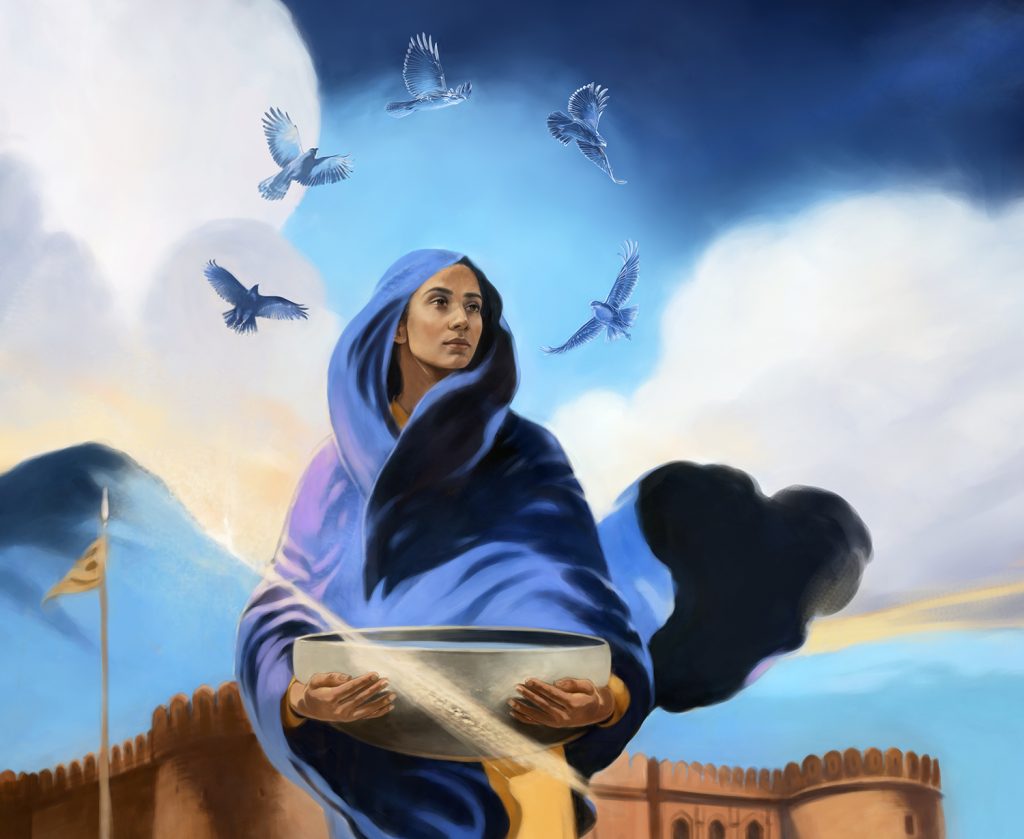
“My father’s family is from the village of Kot Dharam Chand Klan, near Taran Taran. He has traced our ancestry back to a figure named Manas, along with his son Kapoor and his grandson Ladha, who were all devotees of Guru Arjun. They were local farmers who did seva in the construction of the sarovar at Gurudwara Taran Taran after Guru Arjun purchased the surrounding land for the establishment of a new Sikh community there.”
The artist grew up in Amritsar and the nearby village of Jalalabad. He spent considerable time at his maternal grandparents’ farm and recalls visiting Goindwal Sahib (established by Guru Angad) and Kahdoor Sahib (established by Guru Amar Das).
“My mother would take me to Goindwal Sahib and Kahdoor Sahib regularly and when we lived in Amritsar, one of my earliest memories is taking part in the Kar Seva at Harimandir Sahib when the sarovar was drained and cleaned.”
Like many Sikhs, his family left Punjab after the events of Operation Blue Star and the worsening of the political situation in Punjab.
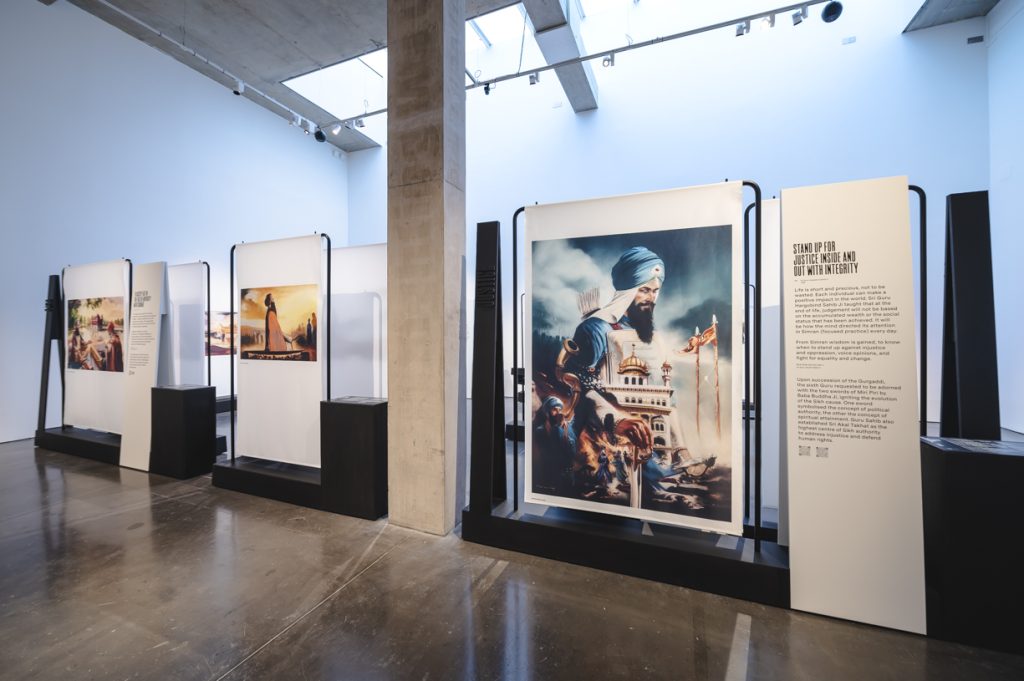
“My father worked abroad but owned a hotel very near Harimandir Sahib, which my grandfather helped to run. We lived in an area called Lawrence road and we were well established in the city, but everything changed after 1984. I only have vague memories of that time but I remember that my mother and I were afraid to leave our house for a week and we had little food and water, until eventually my grandfather was able to come get us and take us to the village”
The events of 1984 left a strong impression on the artist and have been a driving motivation in his paintings which have strong political undertones running alongside the spiritual themes.
“The concept of Miri Piri in Sikhism is central to all of my work; my art is as political as it is religious because in Sikhism both are intertwined out of necessity. If I create a painting of Guru Arjun giving the people the gift of the Adi Granth, a text in the common language of Punjab, it speaks to freeing peoples’ connection to their religion from the grip of a priesthood who up to then jealously guarded understanding of all Indian religious texts by keeping them in Sanskrit, a language only the priestly caste were allowed to learn. The same goes for paintings of Sikh Saheeds such as Baba Banda Singh Bahadur who fought for our Sovereignty or Jaswant Singh Khalra who died defending human rights.”
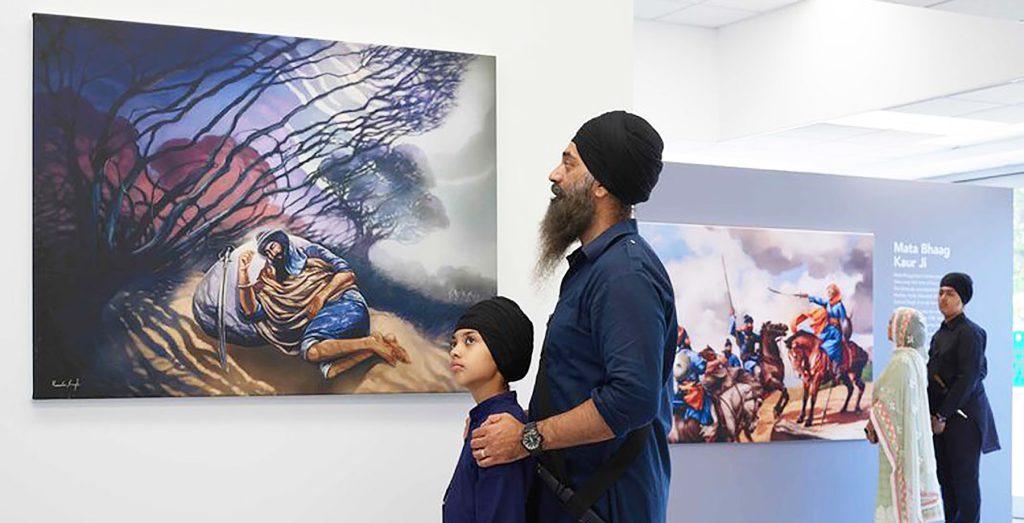
The artist continues to work on new projects and exhibit his art internationally. Since the launch of the permanent gallery in Slough, his work has been presented as a traveling exhibition across the UK at the Kelvingrove Art Gallery and Museum in Glasgow, Arnolfini Art Gallery in Bristol, The New Art Exchange in Nottingham, and Cromwell Place in London. The next planned shows will take place across North America, with the first stop in New York City. In addition there are several Gurdwara’s who have supported Kanwar Singh’s artwork with prominent displays at the Gurdwara Singh Sabha East London, Gurdwara Siri Guru Gobind Singh Ji in Telford UK, Gurdwara Sahib, Leamington & Warwick, Guru Nanak Gurdwara Smethwick and many others.
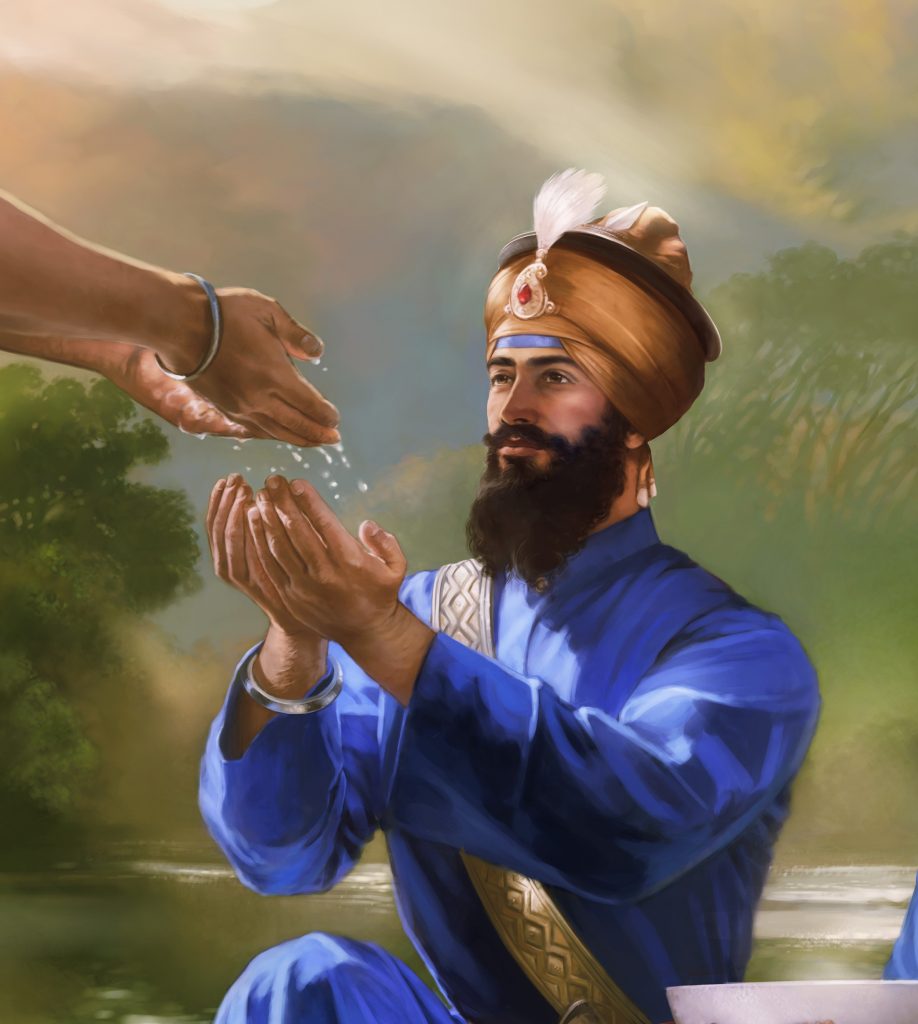
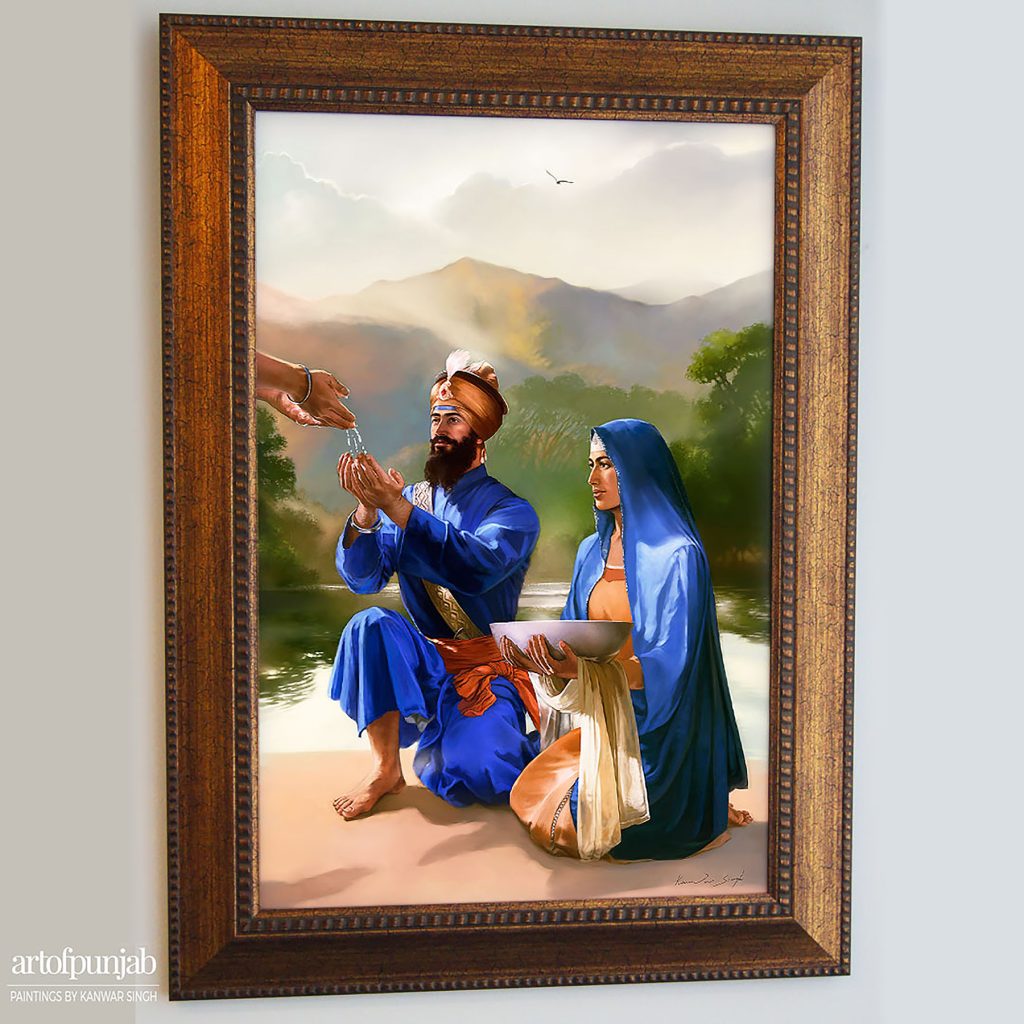
Kanwar hopes that his art will be a vehicle for Sikhs to explore their own rich heritage as well offers an opportunity for non-Sikhs to learn what Sikhism offers all of us as religious and cultural identity in the world. As well as creating the art, the artist takes a hands on approach to every print that he creates.
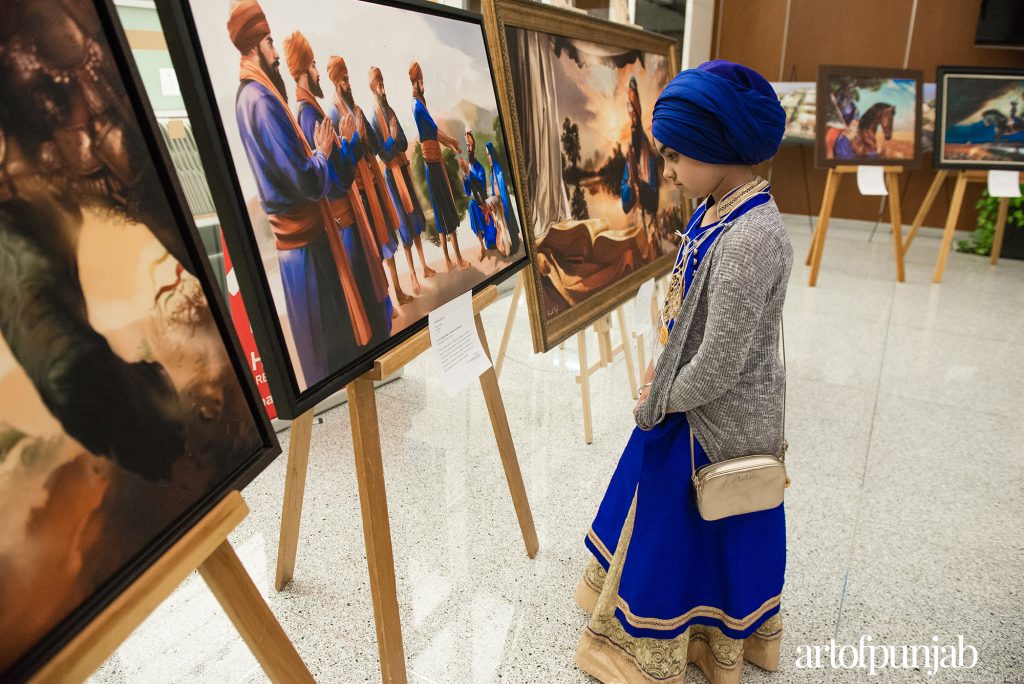
“After I finish a painting, my next goal is to create a uniquely beautiful fine art print. I carefully select the best paper and canvas types to suit my classical style of painting. I then personally print every piece in my studio using the highest quality inks so that colours are as rich and vibrant as the original painting. I’m honored when people give a place in their home to my creative visions and I do everything in my power to give them something unique which they can treasure, including limited edition canvas prints which I hand sign. To me this goes back to the Sikh principle of Kirat Karni, to work hard and honestly, and thank the people who have enabled me to spend my life working as an artist.’
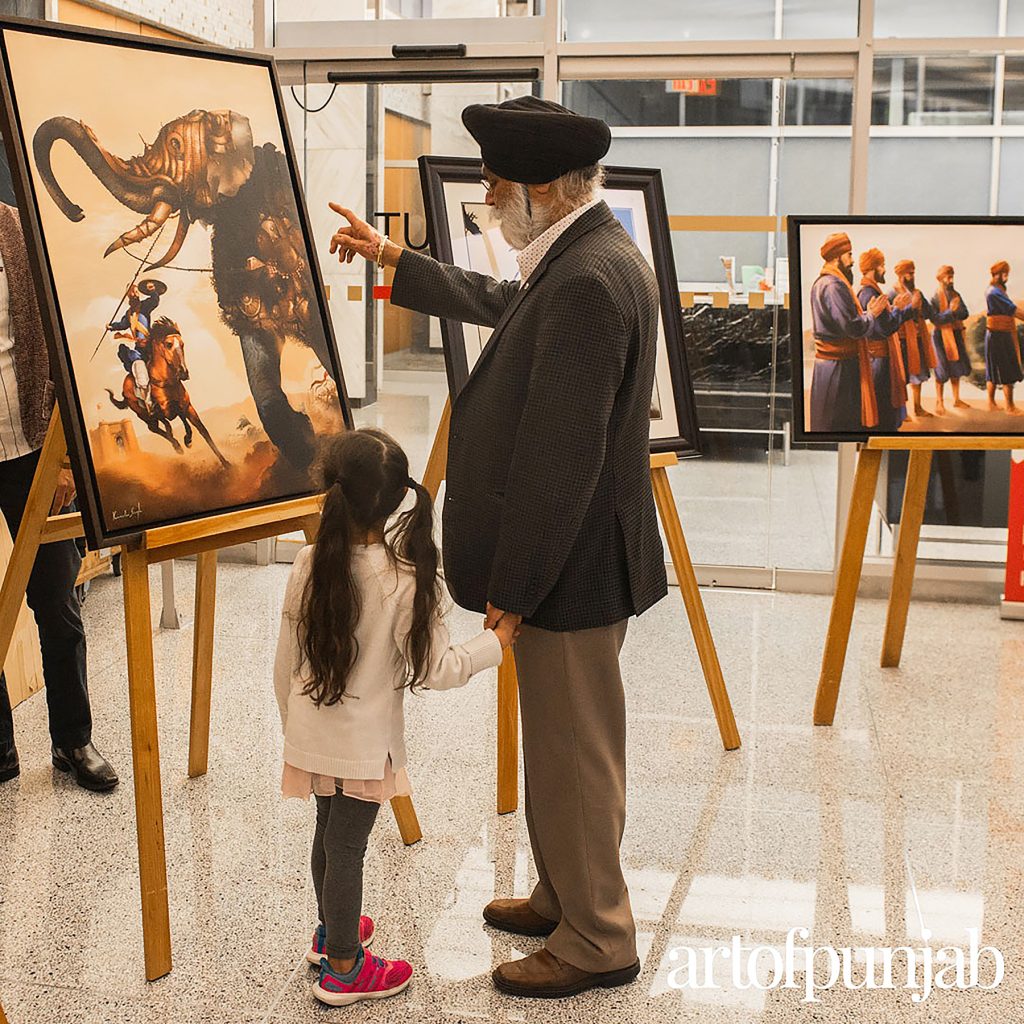
Kanwar Singh has always been grateful to the many people who have supported his journey as a Sikh artist and hopes to continue that work for as long as he can, since Sikh history offers him many incredible subjects he has yet to explore.
To see the artists’ full collection of art and available fine art prints, you can visit his online gallery at artofpunjab.com.



